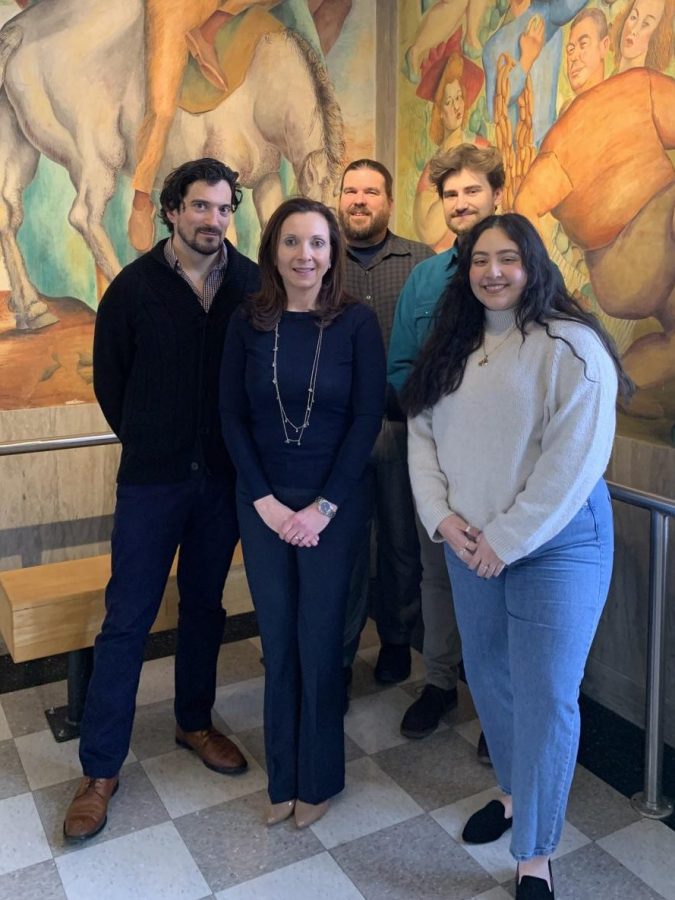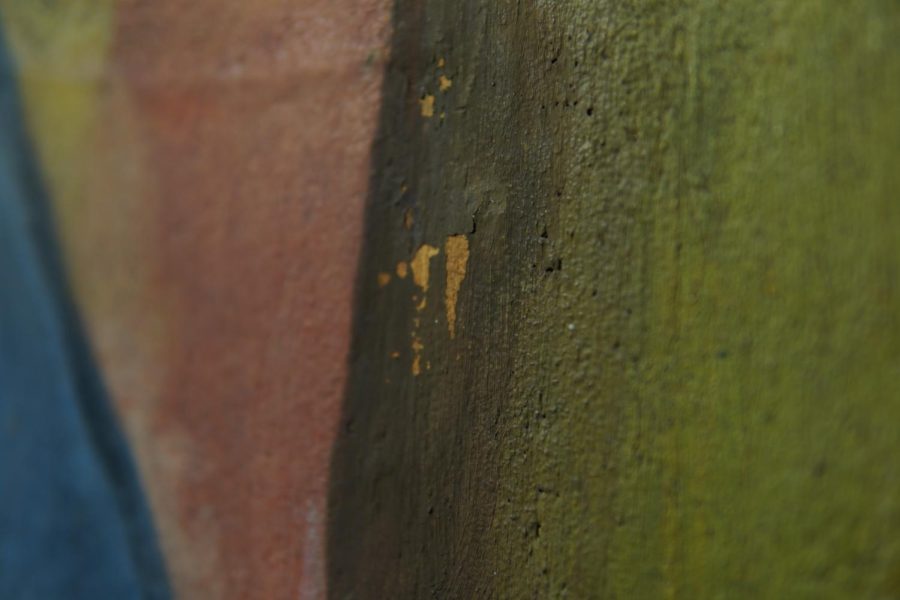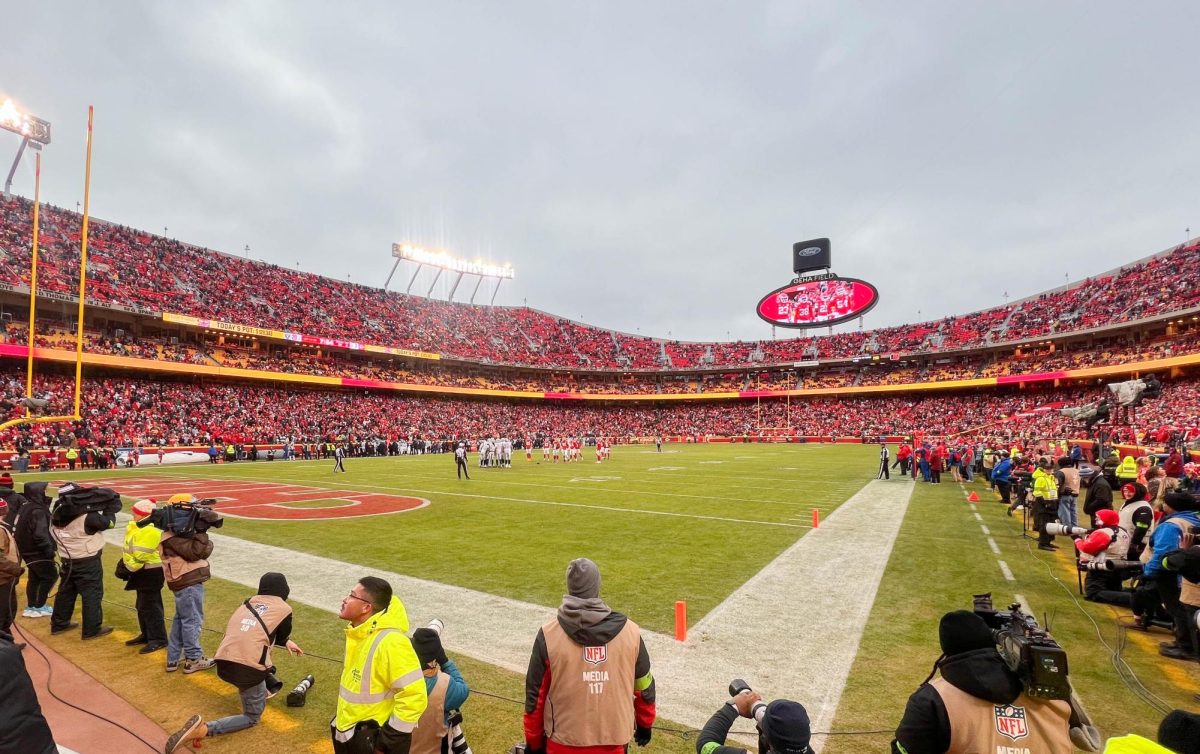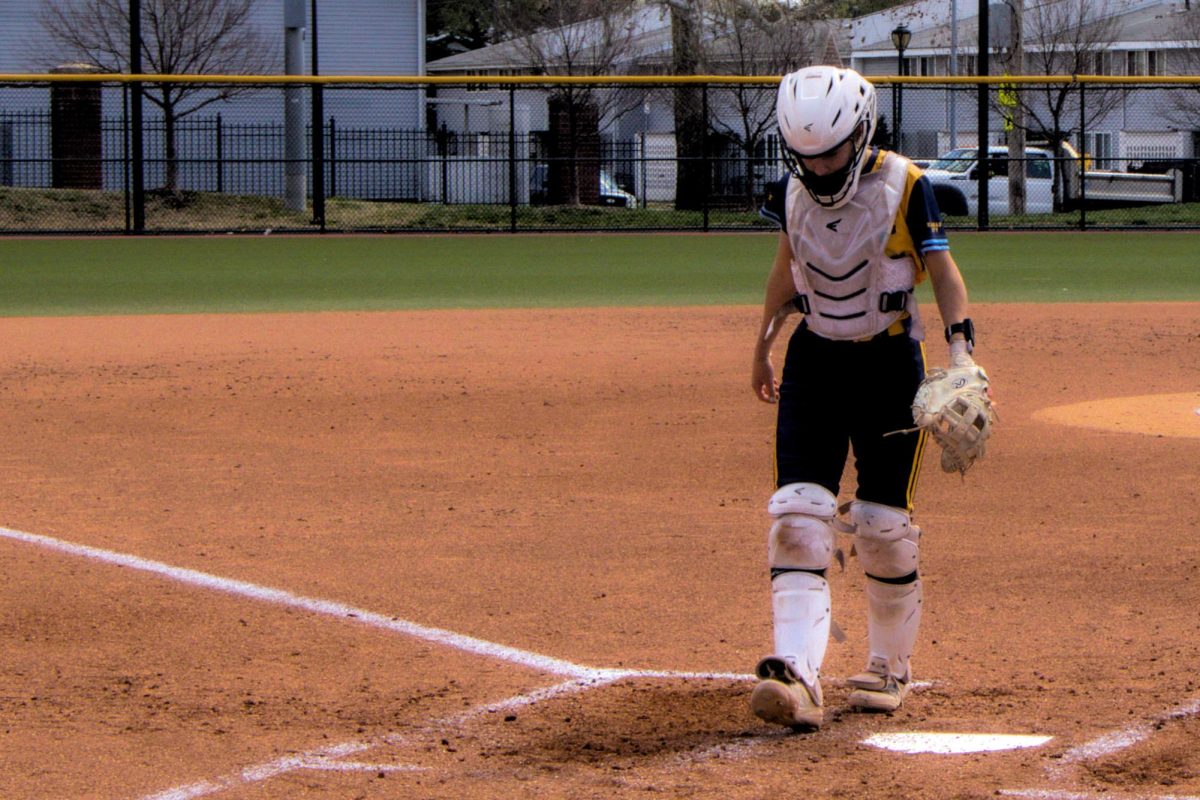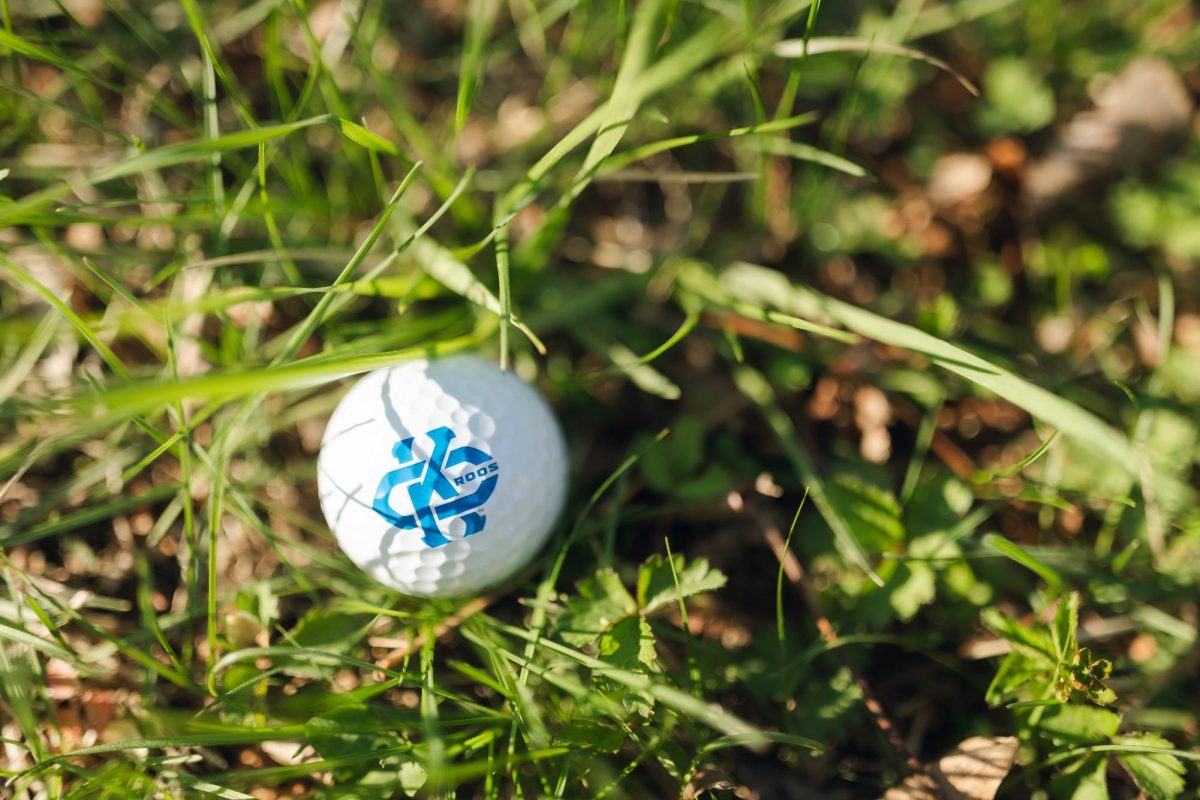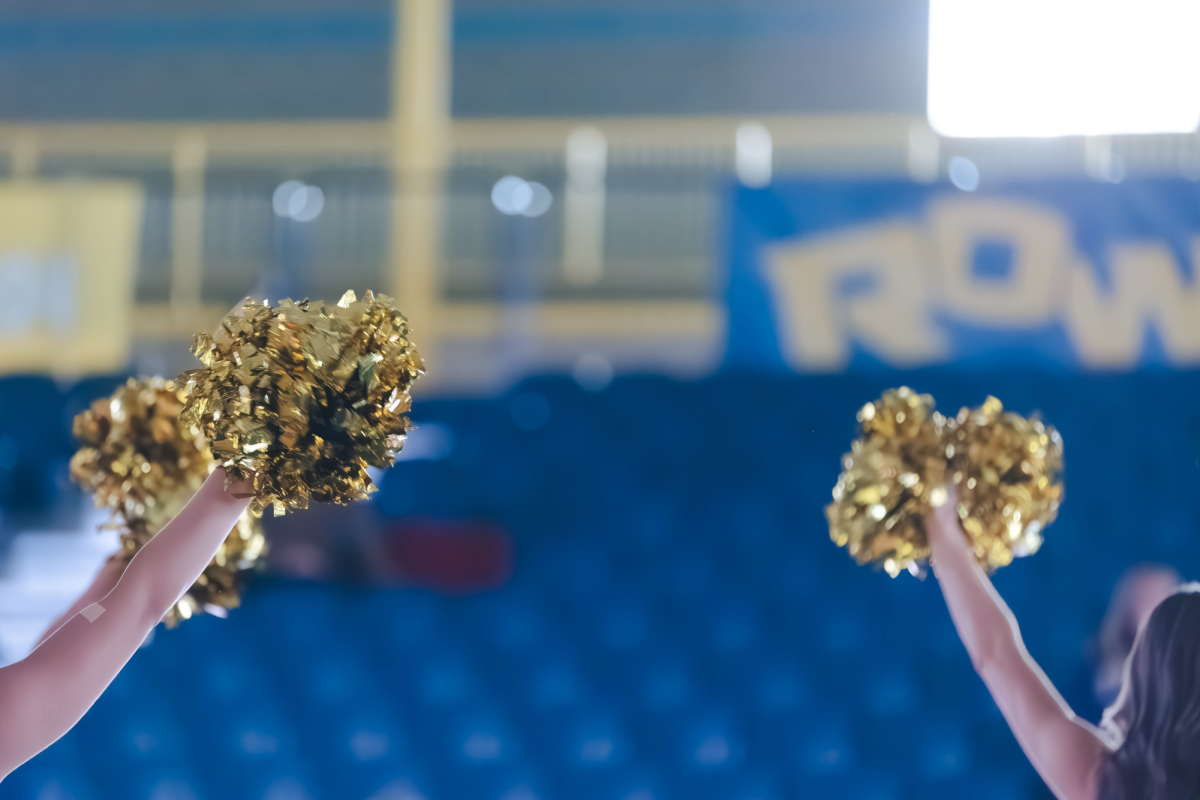Historic Haag Mural Damage Prompts Restoration Project
A student and faculty collaboration to save Luis Quintanilla’s rare artwork
Restoration team members from left to right: Alberto Villamandos, Viviana Grieco, Christopher Wolff, Adam Sisk, Victoria Dominguez
March 17, 2023
Hundreds of students walk past the artwork on the second floor of Haag Hall, but how many actually stop and notice the priceless patchworks of plaster right in front of their face?
“I don’t know anything about them,” said Karion Jackson, a junior elementary education major. “They look very outdated.”
The murals are starting to show their age. Cracks, gouges and chipped paint tarnish the surface of the once pristine paintings.
Of these fresco murals, painted by Spanish artist Luis Quintanilla in 1940, UMKC is home to one of only two in the world. Other artworks in this medium by Quintanilla were systematically destroyed in his home country during the Spanish Civil War.
However, their value has not been lost on Christopher Wolff, a published UMKC historian and manager of the campus bookstore.
“They are a priceless art treasure,” Wolff said. “They are a part of the shared experience of all the generations who have come through here over 82 years.”
Not only does he hope for the restoration of the murals, but a revival of the rich history associated with them. Wolff is spearheading a project to restore the murals in collaboration with undergraduate students and faculty from the history department.
“The warning is so timeless,” Wolff said. “I look at the conflict in Ukraine, and I always think of this [the murals].”
The message of the paintings remains relevant to this day. Through the lens of “Don Quixote in the Modern World,” the political climate of 1940s Europe is depicted in Quintanilla’s brushstrokes.
The artist became somewhat of a folk hero during his time serving as a general in the Spanish Civil War. After the fall of the Spanish Republic, Quintanilla was forced to flee the country for his safety.
UMKC president at the time, Clarence Decker, invited Quintanilla to UMKC as part of a program to recruit oppressed artists. He commissioned the murals and hired Quintanilla as a teacher of art.
While painting, Quintanilla chose to incorporate the faces of students and faculty into the characters. Their likenesses now serve as a part of UMKC history.
“When we walk through these hallways, we don’t realize these could be part of a museum,” said Alberto Villamandos, chair of the Department of Foreign Languages and Literatures and member of the restoration team.
Along with Wolff and Villamandos, members Adam Sisk, Victoria Dominguez and Viviana Grieco have raised over $2,000 of their $2,500 initial project goal.
However, the team is currently working through the KC Sister Cities Association to bring in experts in Quintanilla’s medium for a more thorough restoration. This effort would cost roughly $15,000.
The team is determined to convince students they are worth repairing and hope more will donate, as the condition of the murals is continuing to decline.
“Only UMKC has this,” Wolff said. “In time, it’s only going to get worse.”


